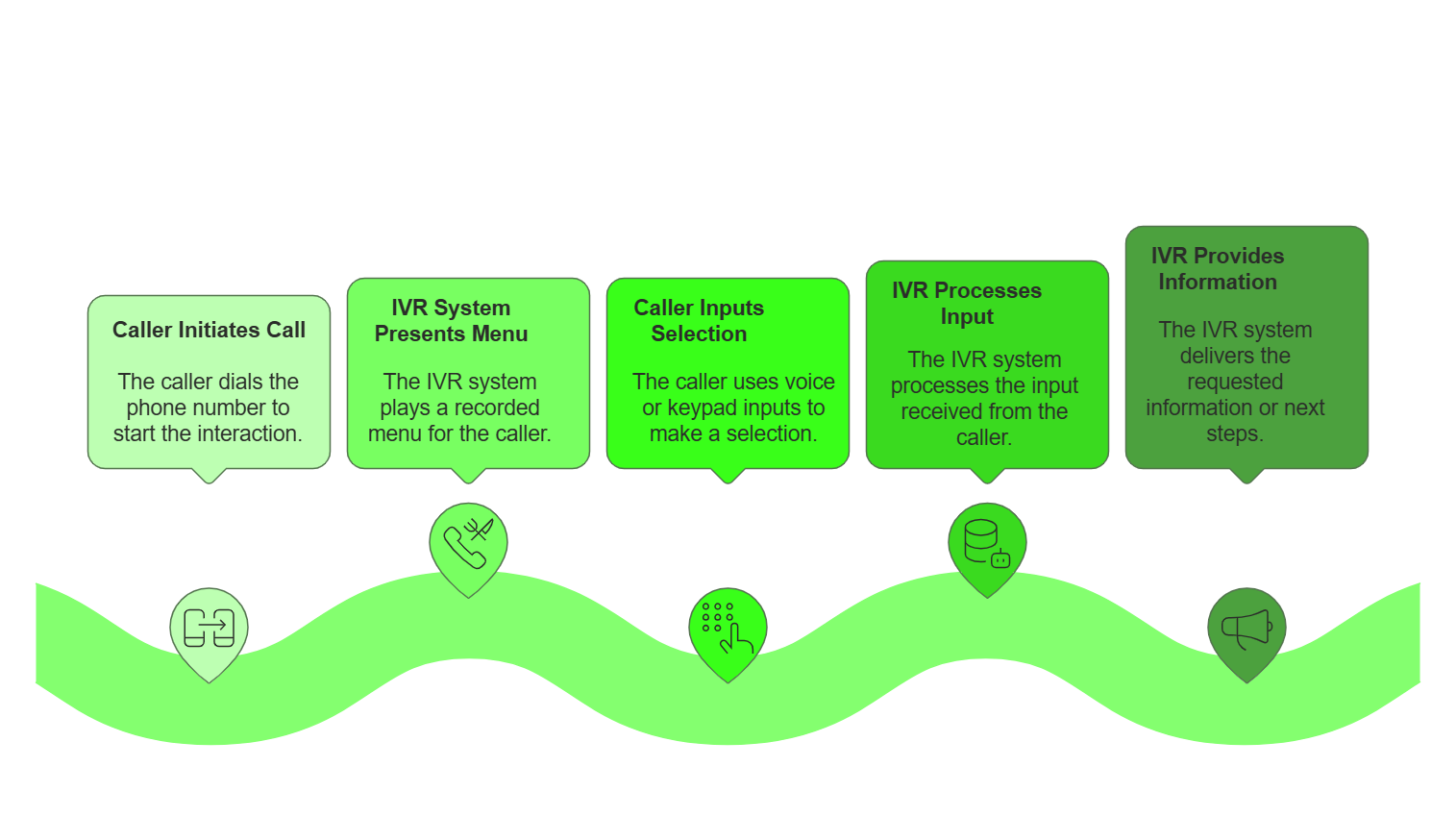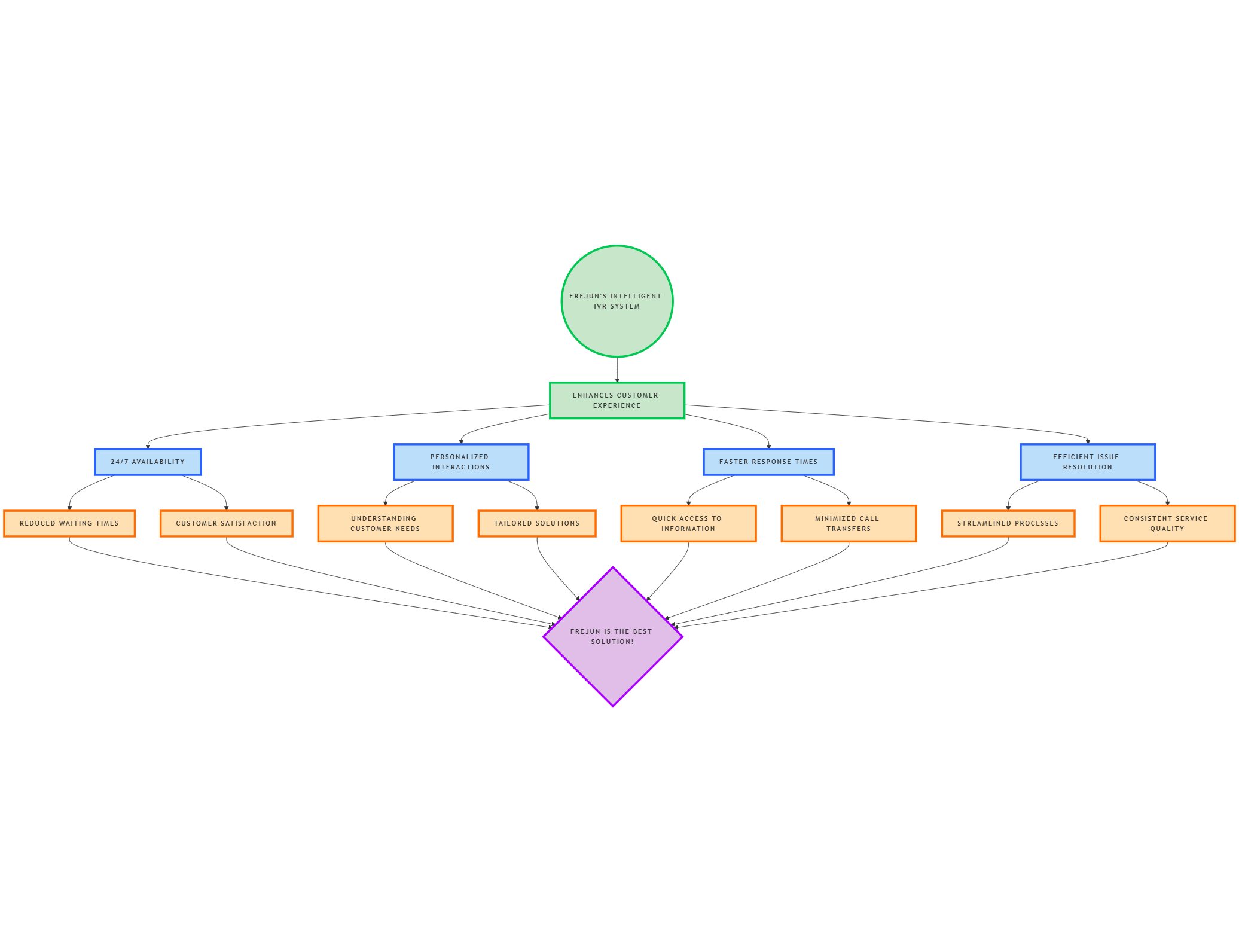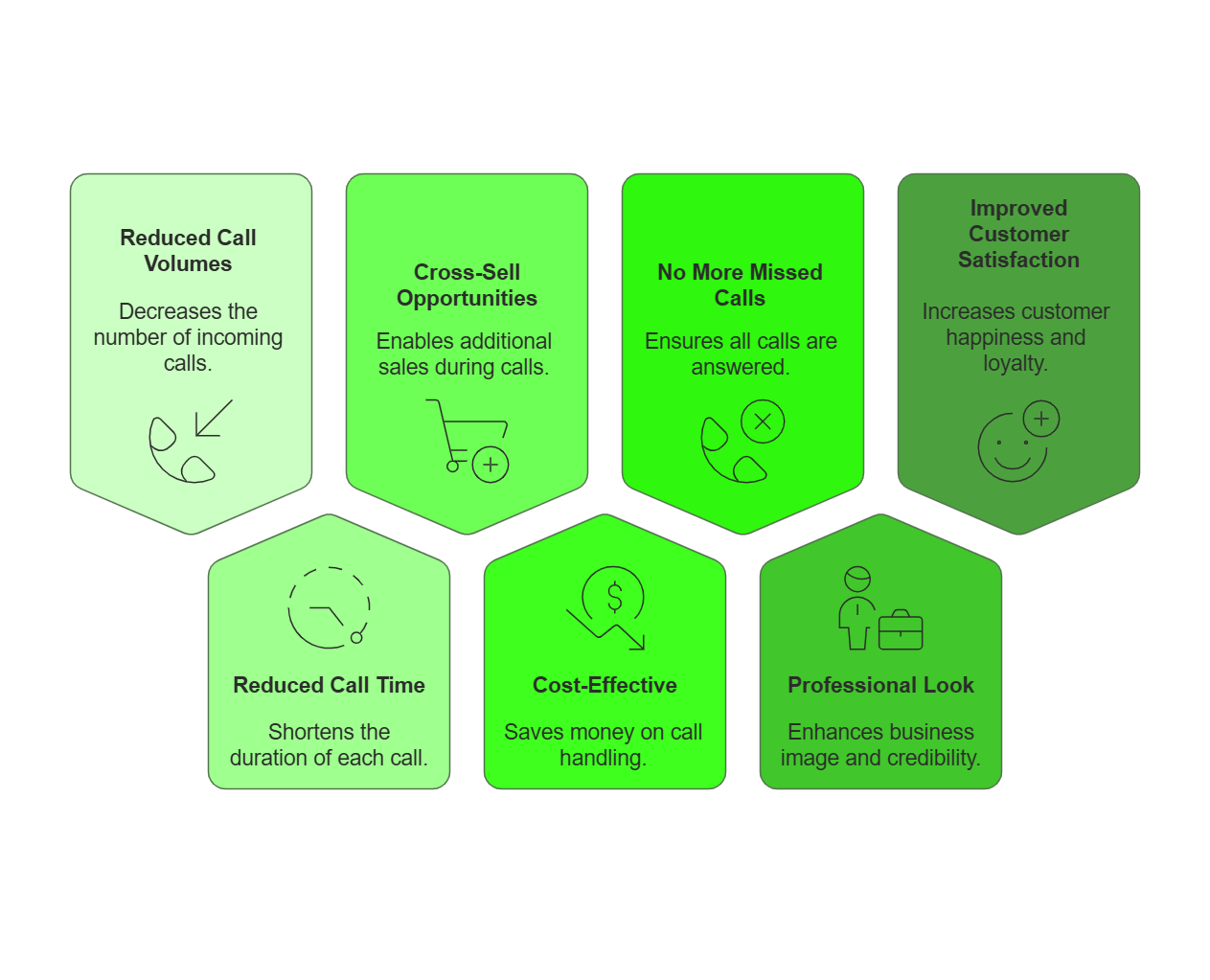Most of us would have interacted with an IVR call center in the past. It could have been for booking a service or for enquiring about a particular flight. The convenience offered us is unparalleled. We get access to all the information readily without the need to talk to a human being. Now that’s the story from the caller’s side. As businesses continue to automate customer service in 2025, AI-driven systems that enhance customer interactions. Whether handling high call volumes or improving first-call resolution rates, IVR plays a vital role in business communications.
What about the business? Why do they adopt IVR contact center? What benefits does it offer them? Let’s find out the answers to all these questions in this post. But first, let’s define what an IVR is.
What is IVR? (Interactive Voice Response)

In today’s fast-paced business landscape, delivering exceptional customer experiences is more important than ever. One technology that has revolutionized customer communication is IVR (Interactive Voice Response). Whether you’ve interacted with it while calling customer service or have heard about it as part of modern business operations, IVR plays a pivotal role in streamlining interactions and improving efficiency.
This blog will take you through everything you need to know about IVR, its features, benefits, and how businesses in 2025 are leveraging it to create seamless customer journeys. IVR, or Interactive Voice Response, is an automated telephone technology that enables your phone systems to route calls based on the caller’s touch-tone input or voice responses.
It works through the combination of pre-recorded messages and text-to-speech technology (or Dual-Tone-Multi-Frequency) that engages callers without an actual live agent.
In case the IVR system for call center is unable to provide the information the caller is looking for, it has the capability to route them to the appropriate agent for further help. The goal of an IVR is to improve call flow and reduce call wait times, thus elevating the overall customer experience.
Key Points on IVR
| Aspect | Details |
| Definition | IVR (Interactive Voice Response) is a telephony system that automates customer interactions. |
| How It Works | Call initiation → Menu navigation → Input capture → Routing/Resolution → Call completion. |
| Benefits | Enhanced customer experience, cost savings, 24/7 availability, efficient call routing, and scalability. |
Editor’s Choice: Virtual Number Provider – Free Trial + Unlimited Calls
Benefits of IVR in Customer Experience

Examples of IVR
The most common example of IVR is when a customer calls an eCommerce business to track the status of their order. The IVR uses the most updated database to present the customer with the list of all the available orders that they have placed in recent times.
Once the customer has chosen an order, either they will be given the latest status of the order by the IVR, or they will be redirected to a live agent to provide more details. Thanks to the input provided by the customer, the live agent will already know who is calling and what order details they are looking for. IVR calling will drastically eliminate the call wait as the live agent doesn’t have to manually find out the order details, and he/she will have all the details handy when the caller gets connected. End result – much better customer satisfaction.
Here are some more examples of an IVR –
- Banking IVR – To know the latest account balance, card hotlisting, checkbook requests, etc.
- Customer Service IVR – To book a service request or complaint for appliances or products at your home.
- Travel Desk IVR – To book a new trip, reschedule or cancel a trip, check the status of a refund, etc.
Top 7 Benefits of Using IVR in Your Business

Here are some of the reasons why you must adopt an Interactive Voice Response system in your business:
1- Reduced Call Volumes
By now, you must be already aware that an IVR call system has the ability to automate calls to a great extent. This has a direct positive impact on the call volume. Let’s elaborate. Since you can configure and pre-record personalized messages, your IVR can answer most of the questions of a caller without the need to direct them to a live agent. Since IVR empowers customers to self-serve themselves, all straightforward and simple questions, like order status, refund status, service status, etc. are easily answered. This reduces the burden on the live agents, who can focus on more critical questions that need human judgment.
2- Reduced Call Time
As we had pointed out in the previous point, you have the ability to preconfigure any type of message. This means you can ask all the important and relevant questions to the customer while they are in the IVR system. For instance, if you are an appliance service agency, your IVR can capture details like their request type, product type, product serial number, etc. Armed with all this information, the live agent can instantly resolve the query and not waste time asking for all the basic information from the customer. The end result is reduced call time.
3- Cross-Sell Opportunities
If you are a really popular business, there will be times when your demand is very high. The callers may have to be put on hold. This is an inefficient usage of time for both your customers and your agents. This is also a great time to use your IVR hold messaging feature to raise awareness of your brand or your products, particularly if you have launched any new products. But be careful not to use any pressure-selling tactics or overwhelm the callers with a lot of information.
4- Cost-Effective
This is quite logical, if you think. For starters, since IVR drastically reduces the call time, your agents can spend more time on important calls. This improves their productivity, which in turn saves you costs. Secondly, an IVR solution is easily scalable without any drastic increase in cost. In other words, your cost is not going to increase exponentially even if the number of calls increases exponentially. Thirdly, an IVR solution eliminates the need for an intermediary customer support agent or a receptionist whose main task earlier was to route the call to the right team. You can save on that person’s salary.
5- No More Missed Calls
Many businesses lose customers because of poor customer experience. And one of the prime factors contributing to a good customer experience is your availability. An IVR helps your business to be available 24X7 for your customers even if the agents are not available. This means your customers’ calls are not going to be unanswered irrespective of what time they call your business number. In other words, there will be no missed calls which can result in an improved customer experience. The best part is simple queries can be answered by the IVR itself even when they call you out of business hours.
6- Gives You a Professional Look
This benefit is particularly applicable if you are a small business. One of the biggest requirements of a small business is to look professional to the outside world. Only then will prospects trust and engage in a transaction with you. IVR is the simplest way to exude professionalism to the world. When a customer calls your business line and is welcomed by a professional message, they will be in for a pleasant surprise. They will be more confident in dealing with a brand that has invested in making the lives of their callers better.
7- Improved Customer Satisfaction
Most IVR systems are carefully designed with the goal of making the calling experience hassle-free. This has a direct impact on customer satisfaction levels. A satisfied customer is not only going to purchase from your repeatedly but is also going to convince their friends to purchase from you. But that’s not the best thing about IVR. You can even measure the current level of customer satisfaction with the help of IVR. All you need to do is run a simple customer satisfaction survey like a CSAT survey. This will give you a better idea of where your customer service levels stand and what can be improved.
7 Best Practices for IVR
Here are some handy tips to follow while setting up your IVR system:
1- Keep the Messages Personalized and Professional
It’s very important to greet the customers in a professional way when they call IVR . Phrases like ‘Dear Customer’, ‘Welcome’, and ‘Thank you for reaching us’ should be a part of your introduction. Wherever possible, make the greeting personalized to improve customer engagement. If the customers have called you during the holidays or non-business hours, have a separate message played out for them, indicating clearly whether you will call them back or when they should call you back again.
2- Keep the Options Simple and Clear
Remember something – all the above benefits of an IVR can be enjoyed by your business only if the caller effectively uses the IVR system. The main reasons why a customer might want to exit an IVR and talk to a live agent is if the menu options are not clear or they are unable to find their desired information. This can be easily avoided if your options are straightforward, clearly segregated, and easily understandable by the caller.
3- Always Offer a Chance for the Callers to Talk to a Live Agent
This is an important best practice but is often ignored by most businesses. Agreed that an IVR offers many advantages, and it is for your own benefit that a caller interacts with an IVR to the maximum extent. However, that doesn’t mean you should stop them anytime from talking to a live agent.
Trapping the callers in your IVR is the worst thing you can do for your business, as it results in a poor customer experience. They will keep going around in circles, unable to get the necessary information and wasting their time. You will lose their trust instantly and they will be highly frustrated with your business. What we recommend is to provide an option to a live agent in all layers of the IVR menu but highlight the wait time to them. This way, they will try to find the answer from within the IVR as they know that they will have to wait for some time to talk to an agent.
4- Offer Both Number Input and Spoken Input Option
Thanks to advancements in IVR technology, today, people can respond to the options and questions posed by the IVR recorded voice orally. The system is also capable of understanding the responses instantly and directing the caller to the right department. But that doesn’t mean all callers will be able to use the voice response. For instance, those with a very thick accent or with a completely different dialect might find it particularly difficult to navigate through the IVR with voice responses as the system may find it difficult. When you offer both options, you will be assured that the caller will easily reach the desired department, no matter what.
5- Have a Callback Option
Time and again, we have highlighted in this post that one of the most important reasons for a business to adopt an IVR solution is to improve customer experience. In other words, you must do everything you can to make your customers feel valued when they interact with your brand. Having a callback option is a great way to do this. Now, a callback option in your IVR serves two purposes. One, you show the caller that you value their time, and you do not want them to waste their time waiting to talk to an agent. This automatically makes the caller happy. Two, you can reduce the burden on your agents as they can call the customers when they are actually ready to take a call.
6- Offer Multiple Language Support
Never assume that all your callers know English. When you are particularly living in a multilingual country like India, you need to ensure that your IVR supports all the popular languages like Hindi, Tamil, Telugu, Kannada, Bengali, Malayalam, Marathi, etc. If your business is localized, then you can just have English plus Hindi plus the local language. This way, you ensure that communication doesn’t become a barrier for your callers to not engage with the IVR.
7- Keep Your IVR Fresh
No, we are not asking you to change the menu options or your IVR voice every day. That’s practically not possible and not recommended, as your callers will get confused. What we are instead telling you is to keep your IVR updated once in a while. Talk about your latest offers or your new launches through IVR. You can even add some trending voices or songs as part of the holding process. Long story short, do not let your IVR stagnate with old and irrelevant options while your business keeps evolving.
Conclusion
And that’s a wrap. You now know why businesses across the globe adopt IVRs. Apart from offering a stellar customer experience, it also saves costs and improves the efficiency of your agents through its powerful IVR features.
IVR remains a cornerstone of modern customer communication. By adopting a well-designed IVR system, businesses can deliver faster support, reduce operational costs, and create a better customer experience. In 2025, as technology evolves, IVR systems are becoming smarter, more intuitive, and highly integrated with AI and data analytics.
If you haven’t yet implemented IVR in your business, now is the time to explore its potential. Equip your business with a reliable IVR system to meet customer expectations and stay ahead of the competition. Besides IVR call center solutions, your business should also adopt cloud telephony software like FreJun, as it automates most of the calling activities. It even offers advanced features like call scheduling, call recording, autodialer, etc., all of which make the lives of your agents way simpler.
Further Reading: Top 11 VoIP Service Providers In India
FAQs
IVR (Interactive Voice Response) is an automated telephone technology that lets your business phone system route calls to the right department based on their touch-tone input or voice responses.
The primary purpose of an IVR is to reduce the call wait time by offering instant solutions and directing the caller to the right team in case it is unable to solve the request.
A typical IVR system costs anywhere between ₹2500 to ₹50000 per month based on the number of phone numbers you needs.
Popular IVR examples include Banking IVR, Customer Service IVR, and Travel Desk IVR.
There are many IVR service providers in India that make it very hard to narrow down. The general rule is to pick a provider who fits your budget and has good reviews in platforms like G2 and Capterra.
Signing up with FreJun doesn’t take more than a minute. Click here for a free trial.
There are mainly two types of IVR based on whether you receive calls or make calls. They are: inbound and outbound IVR.
